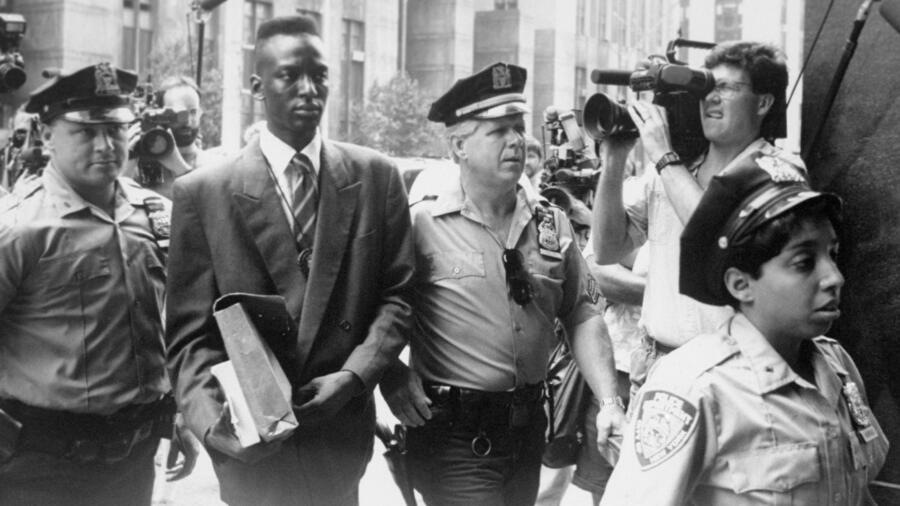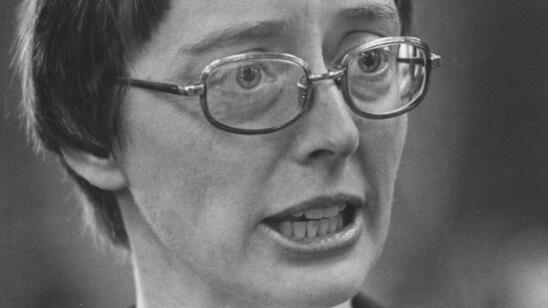There were 29 reports of first-degree rape or attempted rape in New York City the week of April 19, 1989, but none received more media coverage than the rape and beating of a 28-year-old white woman in Central Park. The five Black and Latino teenage boys who went to prison for the crime were exonerated in 2002, after a confession and DNA tests identified the real assailant. Since then, those five—Yusef Salaam, Raymond Santana, Kevin Richardson, Antron McCray and Korey Wise—have continued to advocate for themselves and others caught up in the criminal justice system.
When police arrested the boys, four of them were between ages 14 and 15. Wise, who had a learning disability and a hearing impairment, was the oldest at 16. Police held the boys for hours and four would later claim that they had been coerced into making false confessions. Those confessions contradicted not only each other’s statements, but the basic facts of the case. The confessions were the only evidence the prosecution had to argue the boys attacked jogger Trisha Meili on April 19, since DNA evidence discovered at the crime scene didn’t match any of theirs.
Meanwhile, public opinion remained against the boys, who became known as the Central Park Five. A New York Daily News story referred to the Central Park attackers as a “wolf pack” and in subsequent reports, the teens were described as “savages,” “animals” and “human mutations.” Real estate developer (and future president) Donald Trump added fuel to the media frenzy when he took out full-page ads in The New York Times, the New York Daily News, the New York Post and New York Newsday, calling for the city to bring back the death penalty so they could be sentenced to death.
Salaam, Santana, Richardson and McCray were tried as juveniles and ended up serving between five and nearly seven years. When they came home, their lives were much different. Three of them had been able to earn a G.E.D. and associate’s degree in their juvenile facilities, but all of them had to register as sex offenders and struggled to find work.
McCray moved to Maryland and got a job working in sanitation. Santana, unable to find work in New York City and unhappy that he felt like a financial burden to his dad, began to sell drugs. He was arrested for this in 1998 and sentenced to three and a half to seven years, longer than if he’d been a first-time offender.
Meanwhile, Wise was still incarcerated because prosecutors had tried him as an adult at age 16. While in an adult prison, he met convicted murderer and rapist Matias Reyes. Reyes would confess to being the real attacker of the Central Park jogger. After getting away with the crime in April 1989, Reyes went on to harm more women, including 24-year-old Lourdes Gonzalez, whom he raped and murdered while her children listened in the next room.
After learning that Wise was in prison for Reyes’ own crimes, Reyes confessed to authorities that he was the real attacker and had acted alone. Prosecutors matched Reyes’ DNA and confession details to the crime scene and saw that it fit the pattern of his other crimes. The Central Park Five successfully petitioned to overturn their convictions. Santana was freed, and so was Wise, who had spent all 12 years since his conviction in maximum-security prison.
Exoneration couldn’t erase what had happened to them, but it did open up new opportunities.
Salaam became a public speaker and won a Lifetime Achievement Award from President Barack Obama. Santana started a fashion line called Park Madison NYC and has done work with the Innocence Project to help other wrongfully convicted people. In 2017, Bronx Preparatory High School invited Salaam, Santana and Richardson to walk in the school’s graduation ceremony—an experience they missed in prison. Some of the five men have become fathers, and some like to keep their lives more private than others.
But receiving exoneration didn’t mean the days of arguing their innocence were over. “They still advocate on their own behalf because there’s still lots of people who see them as guilty,” says Natalie P. Byfield, a professor of sociology and anthropology at St. John’s University in Queens and author of “Savage Portrayals: Race, Media and the Central Park Jogger Story.” “And they are constantly doing the work of spreading the word about the abuses they suffered in the criminal justice system as a way of making sure that people recognize these types of injustices exist.”
In 2003, the five men filed a civil rights lawsuit against New York City, which the city settled in 2014 for $41 million. The settlement was a major victory for the men, but as Wise said in Sarah and Ken Burns’ 2012 documentary The Central Park Five, “no money can bring that time back.”
The city continued to deny wrongdoing in its 2014 settlement. During the 2016 presidential elections, then-candidate Donald Trump continued to assert that the five men were guilty. And in 2018, New York City released thousands of police and prosecutorial documents related to the original Central Park case. Both Santana and Salaam told reporters that they saw the document dump as a way for the city to defend its actions close to the 30th anniversary of the trials. They noted that because the defense’s documents aren’t included with the city’s documents, readers might not understand the full context of the case.
“It hasn’t become easier to live as an adult, it’s become harder,” Salaam said in the 2012 documentary about his life since his release from prison. “It’s always more difficult to do something if you have this huge gap of your life taken away from you.”
Related Features:
History.com: Central Park Five
The Offenders Behind 3 Court Cases That Changed Life in Prison Laws for Juveniles
What Are the Last Days of a 33 Year Prison Sentence Like?
How Inmates Help Solve Cold Case Murders While Playing Cards
What’s It Like to Work an iPhone After Being in Prison for 25 Years



